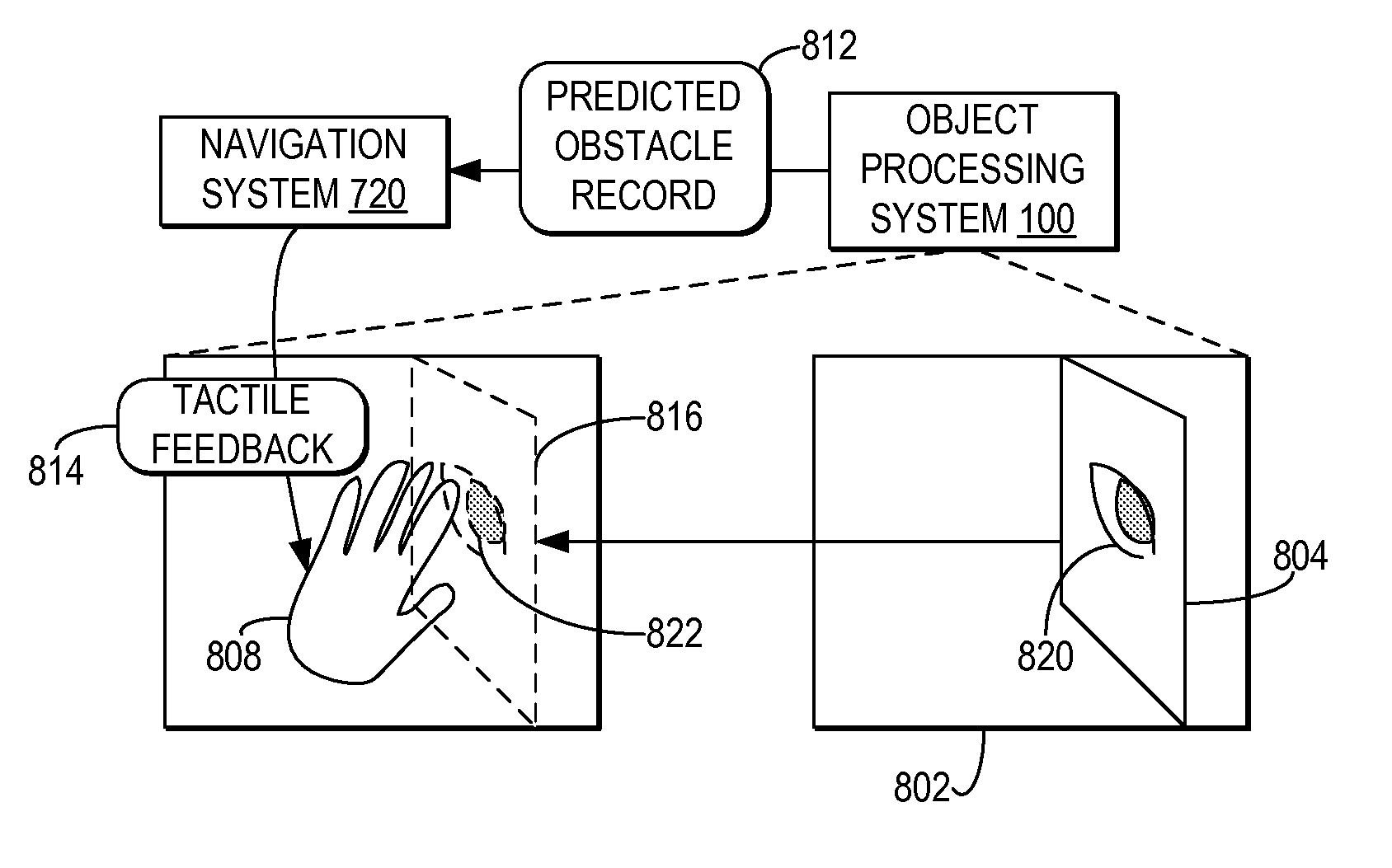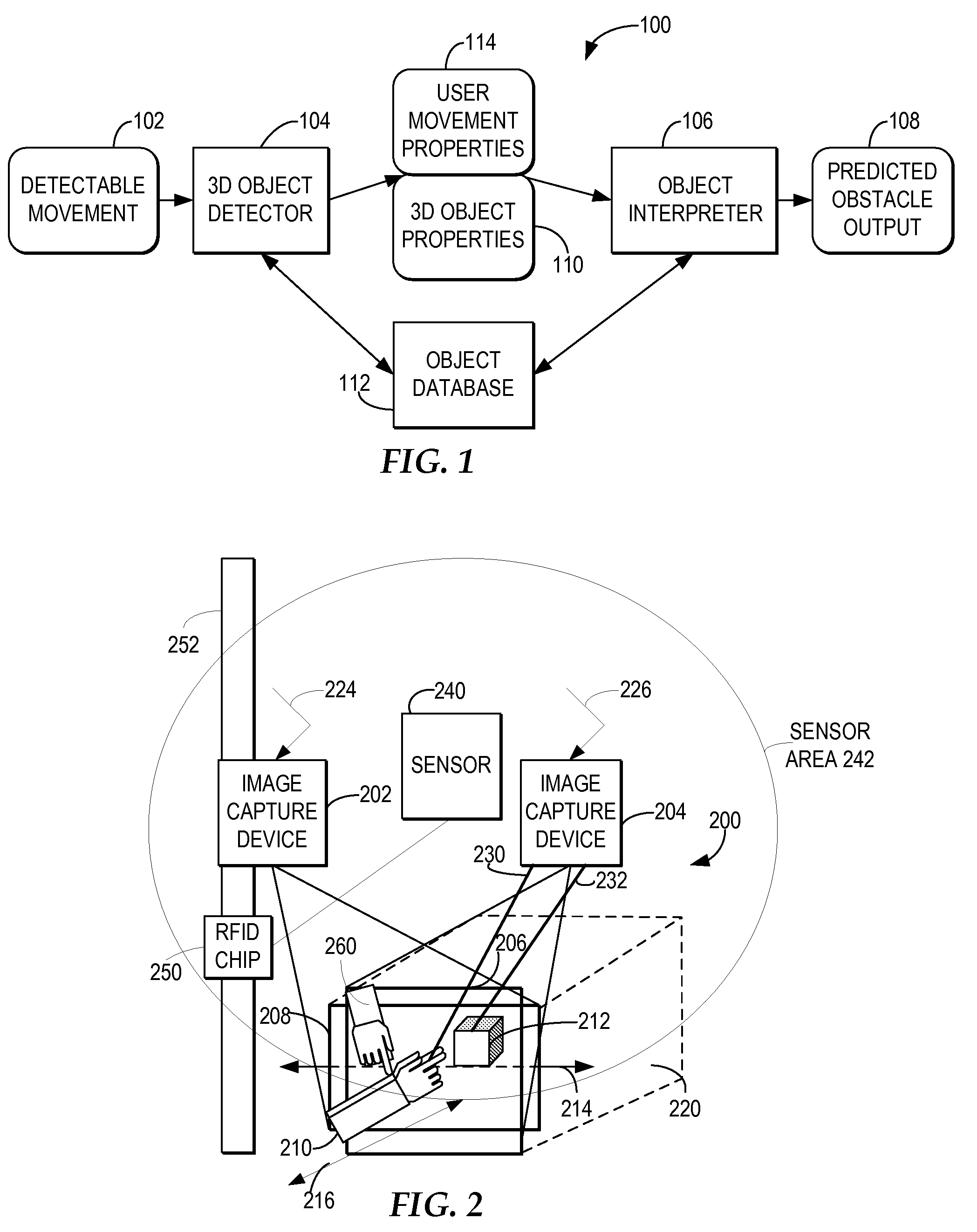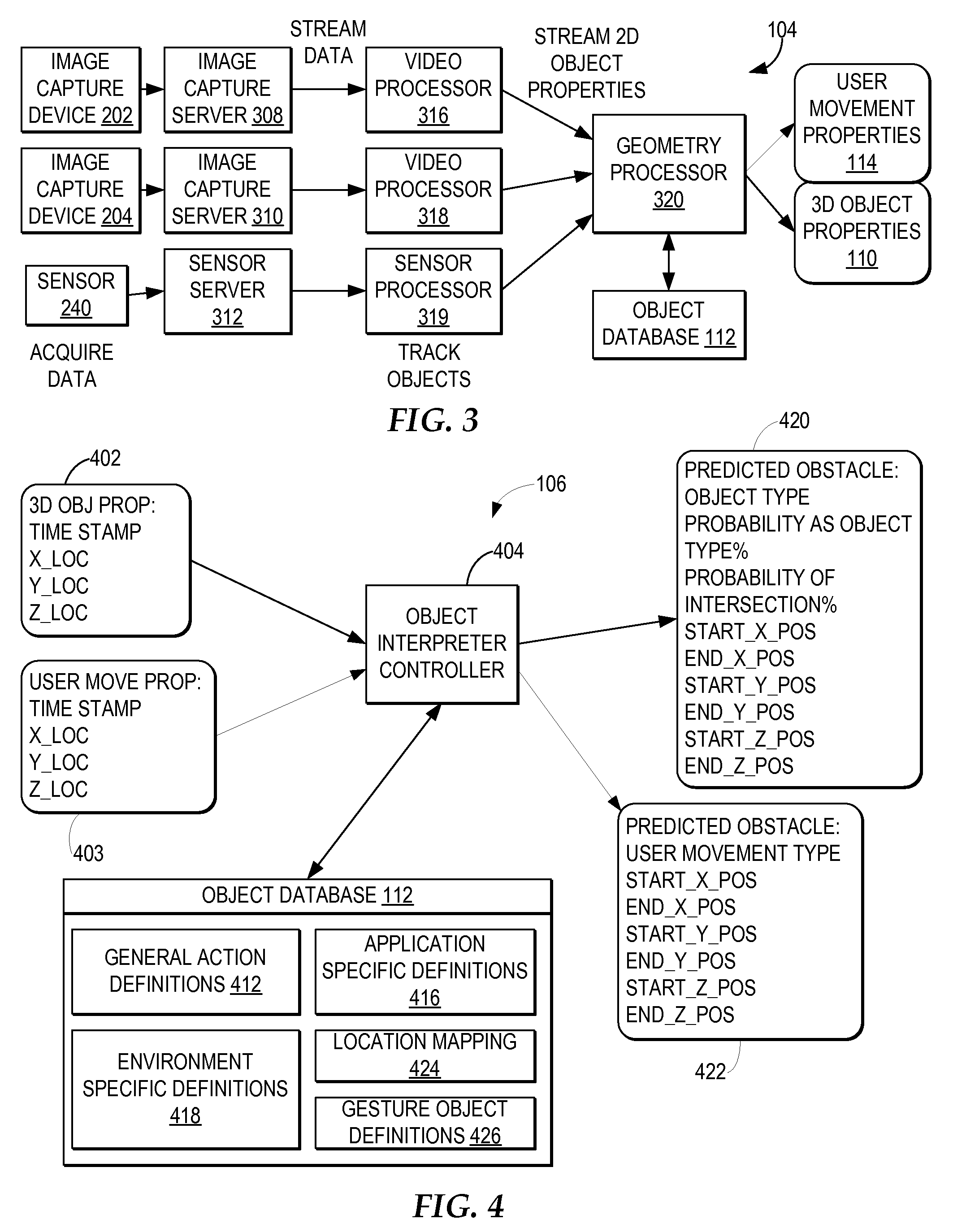Assisting a vision-impaired user with navigation based on a 3D captured image stream
a technology of captured image and navigation, applied in navigation instruments, instruments, transportation and packaging, etc., can solve the problems of not alerting the vision-impaired user to potential obstacles, and neither of these types of devices
- Summary
- Abstract
- Description
- Claims
- Application Information
AI Technical Summary
Benefits of technology
Problems solved by technology
Method used
Image
Examples
Embodiment Construction
[0028]It is important to note that as used throughout, the term “object” may include moving and stationary objects. An “object” may represent an actual or a potential obstacle to a vision-impaired user. In addition, the term “object” may include gestures made by other persons or animals, where a gesture may include user actions typically labeled as gestures and may also include any detectable body movements, body posture, and other types of non-verbal communication.
[0029]In addition, it is important to note that while the present invention is described throughout with reference to a “vision-impaired user”, the present invention may be used by any user. A “vision-impaired user” refers to a user whose vision is impaired in some way such that the present invention provides information about a user's environment which would otherwise not be accessible to the user.
[0030]With reference now to FIG. 1, a block diagram illustrates a flow of information in an object processing method, system,...
PUM
 Login to View More
Login to View More Abstract
Description
Claims
Application Information
 Login to View More
Login to View More - R&D
- Intellectual Property
- Life Sciences
- Materials
- Tech Scout
- Unparalleled Data Quality
- Higher Quality Content
- 60% Fewer Hallucinations
Browse by: Latest US Patents, China's latest patents, Technical Efficacy Thesaurus, Application Domain, Technology Topic, Popular Technical Reports.
© 2025 PatSnap. All rights reserved.Legal|Privacy policy|Modern Slavery Act Transparency Statement|Sitemap|About US| Contact US: help@patsnap.com



